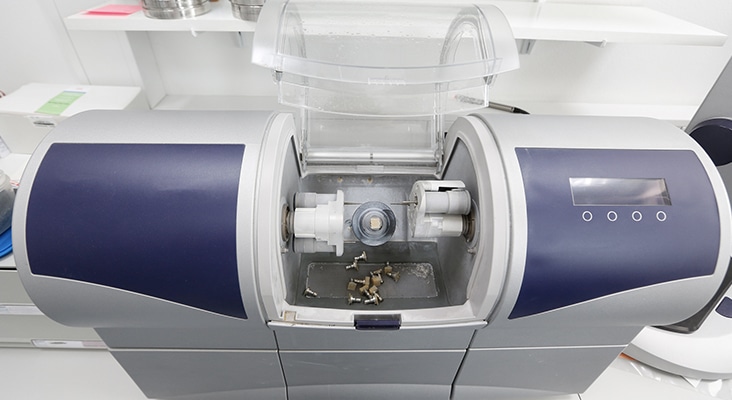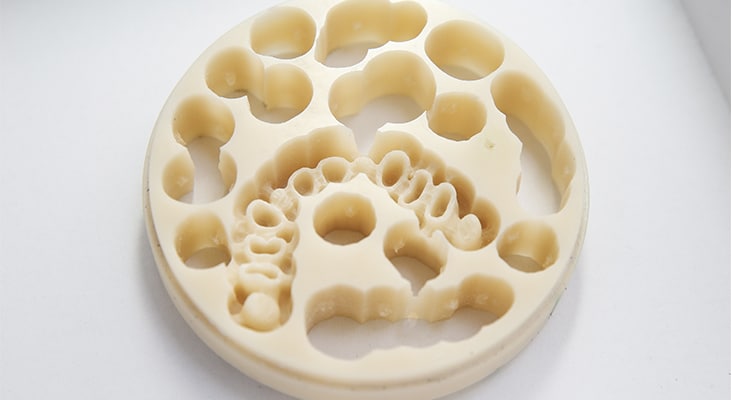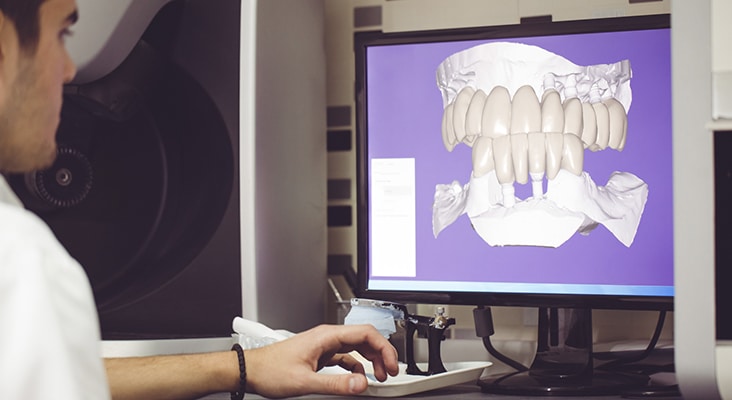Tips for Integrating Technology Into Practice
Digital technology plays an influential role in the delivery of oral health care, and treatment is evolving rapidly as a result of ongoing advances. Digital radiology and photography, for example, help improve diagnostic capabilities and outcomes.

Influential Role
Digital technology plays an influential role in the delivery of oral health care, and treatment is evolving rapidly as a result of ongoing advances. Digital radiology and photography, for example, help improve diagnostic capabilities and outcomes. In addition, many routine dental processes have been positively impacted by digital technology, including communication and information handling, claims processing and insurance reimbursement, and practice management through metrics tracking.
Photo Credit: ismagilov / iStock / Getty Images Plus

Digital Clinical Workflow
Terms such as digital technology, digital dentistry, digital imaging, and computerized dentistry tend to be used interchangeably, with a common meaning of digital imaging and computer-aided design/computer-aided manufacturing (CAD/CAM). These modalities may be thought of as a clinical workflow involving three specific sequences or functions, and a number of articles have described the process in detail. The first function is to record the intraoral condition to computer-based software. This requires a camera, wand, or intraoral scanner, and is often referred to as digital imaging or taking a digital impression. Once the data file has been created on the software, the second sequence involves using a program to plan or design a device—such as a restoration, abutment, implant surgical guide, or bite splint. Once it has been designed, the third sequence is to manufacture the device. Subtractive milling or three-dimensional printing are the primary techniques used in dental CAM processes. Subtractive milling involves cutting or grinding away excess material from a premanufactured block of material, such as porcelain or zirconia, leaving the desired volumetric shape. Conversely, 3D printing involves additive layers of a resin-based material to create the desired volumetric shape.
Photo Credit: zlikovec / iStock / Getty Images Plus

Digital Imaging
One approach to making sense of digital dentistry is to divide the equipment into two categories, based on which function in the CAD/CAM workflow is desirable. The first category is digital imaging or digital impression systems. This modality focuses on the first sequence of the clinical workflow: accurately recording the intraoral condition to a computer, and transmitting the digital files to a laboratory for design and fabrication of the desired device. Software included with digital impression systems, however, does not allow operators to design or plan any sort of device or restoration. It is primarily administrative software that allows for patient identification and case transmission to a dental laboratory for design and fabrication. At best, clinicians can see immediate feedback on the tooth preparation.
Photo Credit: Andrii Panchyk / iStock / Getty Images Plus

CAD/CAM Systems
The second broad category is chairside CAD/CAM systems, which combine all three functions in the dental office. These systems also record intraoral scans, but include a program for designing restorations and a milling unit to fabricate the restoration. They are designed to leverage the efficiency of a single-appointment procedure to the benefit of both the patient and practice.
Photo Credit: zlikovec / iStock / Getty Images Plus

Assessing Accuracy
Compared to digital scans, one limitation of conventional impressions is the degradation of accuracy when multiple pours are made from the same impression. Digital impressions avoid many of the potential problems of conventional impressions, with the added advantage that models can be fabricated with equal accuracy an unlimited number of times, as the digital file does not undergo any loss of accuracy as it is repeatedly processed. Some clinicians have expressed concerns about the accuracy of the restoration outcome when using digital or conventional impression techniques.
Photo Credit: Feverpitched / iStock / Getty Images Plus

Evaluating the Investment
Chairside CAD/CAM systems are designed to leverage the efficiency of the digital workflow in a single appointment for indirect restorations that usually require multiple appointments. This eliminates the need for a provisional restoration, as well as a second appointment to deliver the final restoration. This benefits both the patient (in terms of convenience) and the practice (in terms of productivity). That said, purchasing a chairside CAD/CAM system represents a sizable capital investment, so careful consideration of the return on investment is critical to the decision-making process.
Photo Credit: style-photographs / iStock / Getty Images Plus

Uses in Dental Implant Therapy
Another expanding use of in-office digital technology involves dental implants. Cone-beam computed tomography (CBCT) has become a preferred preoperative 3D diagnostic tool for implant treatment planning. In addition, CAD/CAM surgical guides can be created to facilitate precise implant placement. A number of chairside CAD/CAM systems can integrate the design file from their software program with the file from the CBCT to support a sophisticated, prosthetic-influenced treatment approach. Use of these modalities precludes the need to do a traditional diagnostic wax-up or diagnostic setup, as it can be accomplished virtually through the CAD software and digital file integrated with the CBCT file. This allows for surgical guides to be ordered through the digital planning system or designed and milled in-office.

